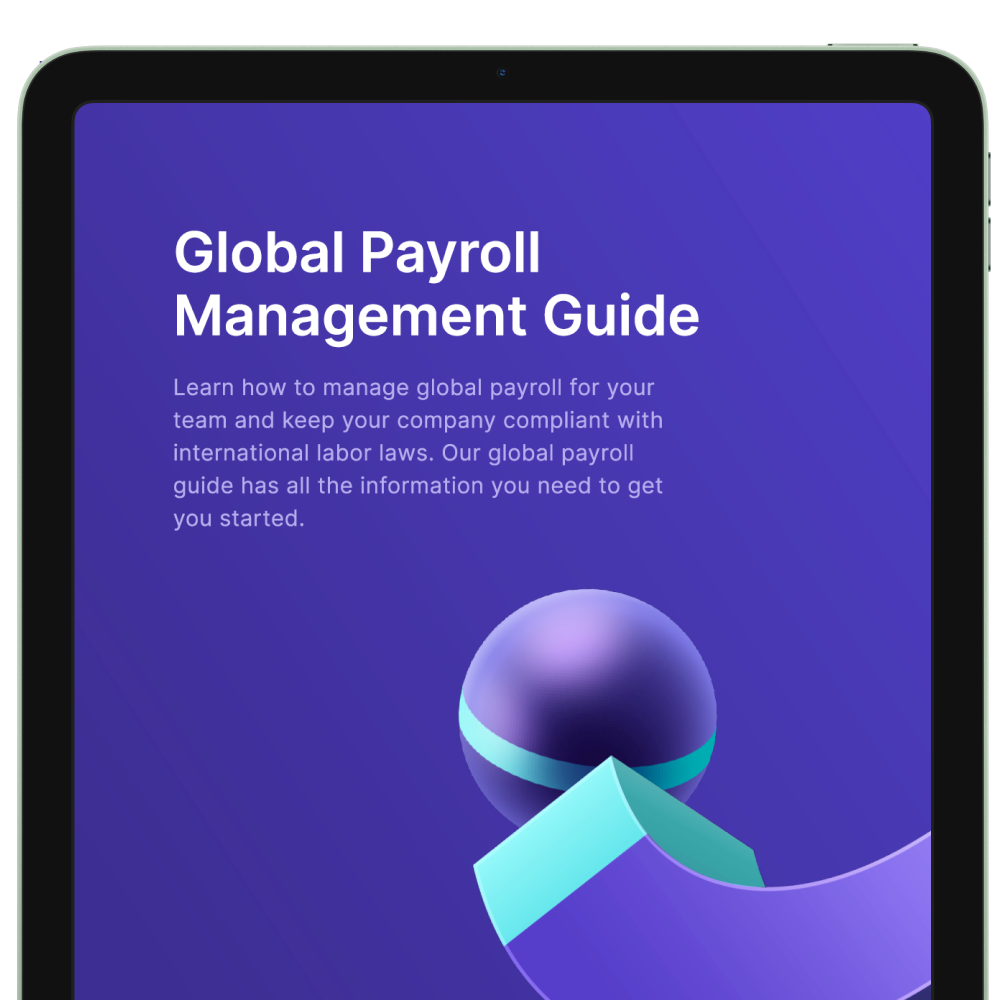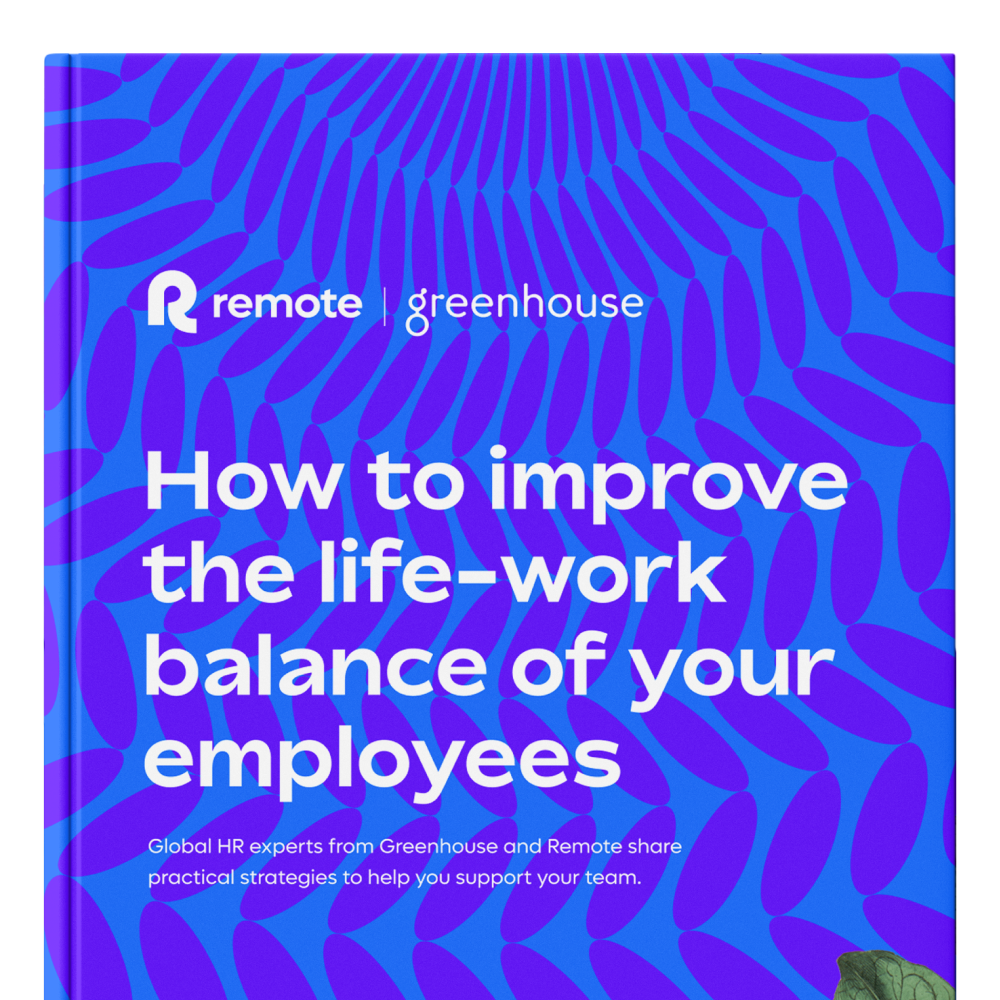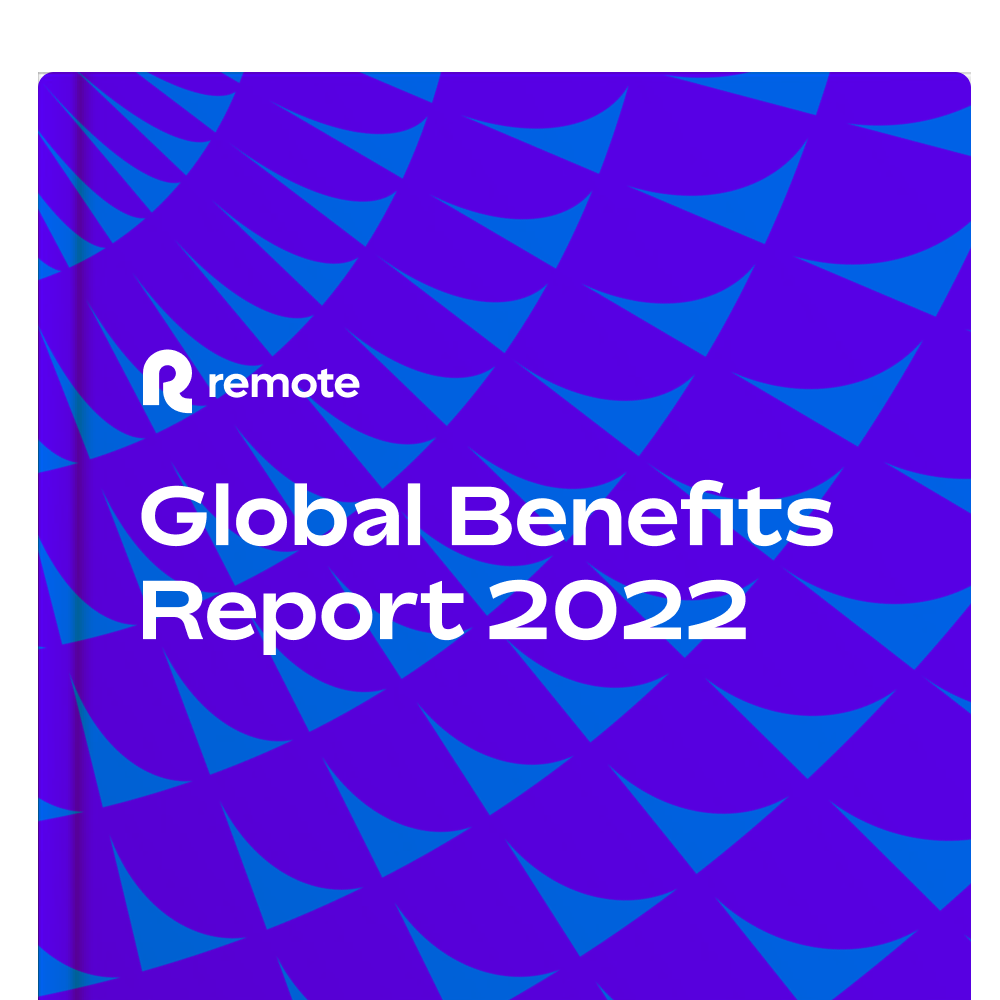
Product Updates — 7 min

Remote & Async Work — 18 min
Global employment is remote employment. But what does that mean for the people finding, hiring, and onboarding those remote teams?
Effective recruitment plans include structure. Your hiring team can provide a consistent and fair interviewing process through effective hiring strategies. Plus, you can consistently attract and hire standout candidates with scalable recruitment practices.
Applying for a job is stressful and often frustrating for applicants. In most cases, the balance of power is strongly skewed toward the employer. This means people interviewing are typically not the best representation of themselves. Success in interviewing does not necessarily predict success on the job.
To remedy the issue, recruitment teams, HR leaders, hiring managers, and individual interviewers should develop specific remote-first recruitment practices because it:
Having a standardized remote interview process levels the playing field for all candidates, as it removes geographic barriers. Candidates are evaluated based on their skills and cultural fit rather than on accessibility or their physical presence.
Candidates being able to choose to do the interview from a location where they’re comfortable, like their house or a neighborhood cafe, helps too. Instead of being overly stressed or nervous, candidates can present themselves more authentically.
A remote-first recruitment is much more personal than a traditional phone interview. It offers a more direct connection through the use of video and collaborative online tools, like digital whiteboards. Video conferencing allows you to clearly grasp visual cues and subtleties, making it easier to understand the person you’re speaking to.
Video interviews are also more immediate than asynchronous communication, where the interviewer and candidate might exchange messages or emails over a period of time. It keeps the conversation going and helps to prevent any misunderstandings from escalating.
With remote recruiting, you’re no longer limited to local candidates. Instead, you get access to a global talent pool. This significantly increases your chances of finding high-quality or cost-effective candidates, depending on your objectives.
Moreover, it’s easier to scale up. This is because remote recruiting tools, such as automated applicant screening, interview scheduling, and communication platforms, can handle an increased volume of applications. HR professionals can actually focus on evaluating qualified candidates instead of wasting time on mundane administrative tasks.
At Remote, we strive for effective employee recruitment that is straightforward, lean, objective, and transparent to candidates and hiring teams. The Remote recruitment team owns the entire recruitment process, which covers every open position at Remote.
We take this responsibility seriously, as we are, in many ways, the core guardians of Remote’s values and company culture.
These values inform and define our approach to effective recruitment strategies, including:
The hiring process for each candidate
The ways we interact with candidates
The process for conducting interviews
The training we offer to our recruiters and hiring managers
Our strategy for achieving sustainable company growth
Our recruiting team strives to build a genuine sense of belonging and connection across a fast-expanding, truly global, remote-first team.
Get noticed by diverse, qualified candidates across the globe. Don't let geography stand in the way of hiring great people.

Learn how to manage global payroll for your team and keep your company compliant with international labor laws.

Most companies that choose to develop a remote recruiting process are looking to hire globally. With more candidates and competition, what does effective employee recruitment look like?
Let’s take a look at three pillars for successful remote recruiting.
A responsible recruiter learns about cultural differences and nuances to create an inclusive workplace. This cultural intelligence is important when dealing with candidates from different backgrounds, experiences, and perspectives. The same gesture or phrase can mean something entirely different to someone from a different culture.
When recruiting globally, it’s important to adapt your communication style to be culturally sensitive and prevent misinterpretation. For example, the Japanese tend to value harmony and respect for hierarchy. As such, direct rejection or disagreement is often avoided, and communication is more indirect.
Remote recruiting is different from just posting job vacancies online, as it needs a certain level of tech proficiency. For instance, it often requires more advanced recruitment software and platforms, such as an applicant tracking system (ATS), video interviewing software, and a Human Resources Information System (HRIS).
Try to stay informed on the latest recruiting tech trends and tools to improve your recruitment strategy and candidate experience. Joining online recruitment forums or attending HR webinars can give you inspiration for effective employee recruitment using new technology.
Remote-first organizations thrive on documentation. Without publicly accessible communications, people in different time zones cannot work together effectively.
Documentation is key to asynchronous working. Transparent documentation is a large reason Remote has been able to scale our global teams so quickly without compromising on talent or fit.
Transparency demands that every conversation that doesn’t contain sensitive data be available to every person within the organization. Of course, Remote is vigilant about candidate privacy, limiting interview notes to secure platforms and not discussing individual hiring processes in public channels. However, everything else — process changes, problems and fixes, questions from employees, etc. — happens in public forums, like open Slack channels or Notion documents.
Why the focus on documentation and transparency? Because without that vigilance, critical information gets lost in private DMs. It’s like hallway conversations at companies with offices. The participants may know the information, but no one else does, and that information is rarely disseminated properly. Insisting on documentation allows our recruiting team to scale a fair and transparent hiring process in countries all over the world.
We have a simple goal at Remote: hire great people for every role. In light of that goal, hiring managers at Remote are bound by a few key responsibilities:
Define the hiring process and job descriptions upfront to share with candidates both externally and internally. Always ask department heads to determine their desired level of involvement. Candidates should know exactly what the process looks like from beginning to end.
Talk about the role internally in public channels, and ping people who might be interested in contributing in some way to the hiring process. This is also the moment to ask for references/referrals. Seek out any channels, tactics, or opportunities to expand the search for more diverse candidates. Never close a position until you have sourced a sufficiently diverse pool of applicants.
A candidate is always welcome to ask for a time more suitable to their time zone. Work internally to see who in your team has the closest availability if you have no overlap with the candidate's time zone. Don't encourage the candidate to schedule in the middle of the night; this won't be a good experience for them or you. Plus, doing so could create an unfair advantage for others interviewing for the same role at normal hours.
The interview is the first impression a candidate has of your company and work culture. So, getting the process right is crucial for attracting and retaining the best employees for your company.
Here are five tips to help you ensure you’re prepared and effective in your remote recruiting efforts:
While this might seem like common sense, many recruiters have a list of questions they just power through. What they forget is that each candidate is unique, so each interview should be tailored to understand the candidate’s unique experiences and how they align with the position’s requirements.
The secret to a successful interview is very simple: prepare for it. Take your time reviewing the candidate's resume, and adjust your interview questions accordingly. This simple act greatly improves the quality of your hiring decisions.
But how do you make an interview better in practice? We suggest that you:
Add 10 minutes to your calendar before the interview to make sure you are organized, composed, and prepared. Check the resume, check other people’s notes, and focus on what you need to achieve in the interview.
Double-check the call link for your meeting and make sure the candidate has access. If not, your 10-minute buffer provides enough time to email the candidate directly with updated call details. And make sure you are logged into your meeting software!
Add 10 minutes to your calendar after your interviews to give you time to fill out a scorecard or write notes about the interview. Submit your feedback as soon as possible. If you don’t have back-to-back meetings, you should be able to handle this task within the hour. Even if you need to wait a bit, set a minimum agreement that feedback is documented on the same day as the interview.
Greenhouse automatically saves your notes if you take them live. You can enter notes directly into the platform during the interview, but try to mute yourself as you type to minimize distraction for the interviewee.
Bookending the interview with preparation and feedback time is a helpful start. To successfully scale recruitment in a globally distributed environment, though, take this one step further by clarifying a company-wide expectation as part of your recruitment process: assign ownership of all aspects of the interview process to the interviewer (not the recruiter).
The interviewer should assume full responsibility and document feedback and next steps as soon as possible. The onus should not be on the recruiter to chase the interviewer (or the hiring manager if other interviewers are involved). Everyone involved as an interviewer must be proactive and help the team move forward quickly by providing timely feedback.
You can’t afford to miss out on a superstar candidate because you neglected one step of your recruitment process. Without in-person interaction, documentation can be the difference between snagging your desired candidate or losing someone to a competitor.
If you’re looking to diversify your team, use multiple platforms to search for candidates. This way, you can tap into a wider range of skills and backgrounds.
Consider the following strategies:
Post a job on our job board and find remote talent anywhere around the world. Remote Talent makes your job vacancy visible to a global audience of professionals who are actively looking for remote work opportunities. This exposure increases your chances of finding the right candidates for your remote team.
Use LinkedIn’s advanced search features to filter candidates by location, industry, expertise, and experience level. Or connect with potential candidates from certain sectors by joining industry-specific LinkedIn groups.
Participate in physical or virtual job fairs that target the regions you’re looking to hire from. This is a direct way to meet and introduce your company to active job-seekers.
Encourage your current employees to refer potential candidates from their professional networks. If you already have a global team, this easily expands your reach in a specific region. Plus, you benefit from pre-vetted candidates.
Learn practical insights from global HR experts at Greenhouse and Remote to help you support your team's life-work balance

One of the most important things in global remote recruiting is developing an inclusive and diverse hiring system.
An inclusive hiring process helps to mitigate unconscious bias and builds a team that is focused on skills and contributions instead of backgrounds and differences.
Additionally, companies that prioritize diversity and inclusion are often more attractive to candidates. For example, about 60% of Americans think focusing on increasing diversity, equity, and inclusion at work is a good thing.
BIDE stands for belonging, inclusion, diversity, and equity. These principles have become an important focus in the modern workplace because employees expect to feel valued and included at work.
Facilitating BIDE can lead to a stronger company, but it takes time. Leaders cannot treat diversity as a set-and-forget metric and expect to see financial gains, increased innovation, or a boost in employee retention through passive improvements.
Instead, businesses must acknowledge that the benefits of BIDE arise when a company rethinks the core of its hiring philosophy. It is not enough to add more diverse voices to the mix: companies must empower those individuals to have a say in the company’s direction. That means hiring with BIDE in mind for every role, including the most senior positions.
Further, companies must consider how their benefits plans facilitate BIDE. Does the company offer equal parental leave? Do leaders set the right example for their teams by taking advantage of their benefits? Employees from traditionally marginalized groups often feel pressure to perform at an outstanding level to be treated as equals. By making BIDE a priority not only in hiring but also in leadership and culture, companies can realize the incredible benefits of a global and diverse workforce.
At Remote, we value our differences. We want to ensure all individuals have equal opportunities and feel a sense of belonging within our organization.
Here are a few final hiring tips you can borrow from Remote’s recruiting philosophy:
We ask everyone at Remote to respond to direct outreach regarding open positions (via LinkedIn, social media, or email) with only the link to the position on our job board. This helps us stay inclusive and avoid the traps of bias that can be difficult to spot in the moment.
If we have an open position but find that those applying are in some way homogeneous (e.g., only male and/or only white candidates), the hiring manager must actively seek out a more diverse applicant pool. Consider posting a job on a site for female engineers or a site dedicated to people of color. Make it clear to your team that it’s not a barrier if these practices cost money.
Avoid becoming complacent about the effect of group identity. The people on the hiring committee should represent the people you are looking for whenever possible. If you can’t accomplish this, it’s likely a sign that you should redouble your efforts to bring in a wider applicant pool.
Regarding gender and sexual orientation, be aware that people have different personal pronouns. If you are unsure, it is okay to ask — preferably ahead of the interview and in a friendly written format. Doing so not only respects our differences but builds trust and community. Likewise, use gender-neutral language, such as "salesperson" instead of "salesman." You want everyone who comes to work at your business to truly feel welcome and invited to bring their full selves.
Insights from 2,500+ decision makers and employees in key markets to help you uncover the benefits your team want and need in 2023.

An ATS saves so much time in remote recruiting. It streamlines the recruiting process by automating tasks like managing job postings, receiving applications, and screening candidates.
Remote uses Greenhouse, the world’s leading ATS, to simplify compliance with international employment regulations and data protection legislation.
We use Greenhouse to:
Open and post roles at Remote
Keep track of the hiring process by scheduling interviews, submitting scorecards, and adding private notes to candidates
Capture our communication with candidates and between interviewers (for example, by tagging a user in the notes/private notes sections)
Extend offers and start the onboarding process
Greenhouse allows our ever-expanding team of recruitment professionals and hiring managers to protect candidates’ privacy and align with GDPR and other country-specific legislation. We have structured and repeatable processes documented in Notion detailing how we use Greenhouse. Guidelines are available to all team members, and Greenhouse serves as the single source of truth at Remote for all of our recruitment-related activities.
In fact, Remote and Greenhouse complement each other so well that we officially partnered with Greenhouse to make international employment easier for everyone.
Clarity, documentation, and transparency help us continually hire exceptionally talented new Remoters who share our core values as we expand to all corners of the globe. A perfect fit between position, candidate, and Remote can only be found if the process stands on the shoulders of our values. If we can consistently see in the candidate the skills, attributes, and attitudes that reflect our values, then we are hiring the right person.
Effective recruiting doesn’t end with sending out an offer letter. What happens after is equally important.
A smooth transition from recruiting to onboarding helps ensure a positive experience for both your company and the candidate. It not only cuts down the effort and time your team spends preparing for each stage, but it also helps the new hire quickly integrate into their role and the company culture.
Remote HR Management helps you manage the entire lifecycle of your employees all in one place. From job posting and recruitment to onboarding and payroll, you can take care of your global team from a single platform.
Remote has been instrumental in helping TheyDo, a globally distributed company, overcome the challenges of global recruitment.
By streamlining hiring processes and providing expert guidance on local labor laws, Remote enables TheyDo to tap into a limitless talent pool without compliance risks. Remote offers simple onboarding and payroll, allowing TheyDo to recruit top-tier candidates with speed and precision. This partnership empowers TheyDo to scale efficiently while focusing on innovation and building a world-class team.
“Remote helps us unlock unlimited talent pools, and having the best talent gives us the greatest chance of business success. They enable us to onboard quickly and seamlessly, providing specialist knowledge on local labor laws. This combination of expertise, speed, and quality creates a win-win situation for both the candidate—our new hire—and for TheyDo.” Matt Moralo Langan, Head of People
Want to check out Remote in action? Book a demo to see how using Remote can lead to a 30% reduction in time-to-hire.
At Remote, we hire all over the world, with hundreds of employees across the globe. We have seen the benefits of remote-first recruiting as an effective hiring strategy for ourselves. To see open roles at Remote, visit our careers page.
If you are looking for an effective recruiting plan to welcome new team members, sign up with Remote Talent. Unlike traditional job boards, Remote Talent helps you cut through the noise and stand out as a remote employer to hire global talent.
To see how Remote can help you hire and manage global team members, chat with us today.
Get noticed by diverse, qualified candidates across the globe. Don't let geography stand in the way of hiring great people.

Subscribe to receive the latest
Remote blog posts and updates in your inbox.

Product Updates — 7 min

Global Payroll — 2 min

Minimum Wage & Compensation — 7 min

Newsroom — 5 min